Best Tested Tips for Travel Photography Etiquette in Thailand
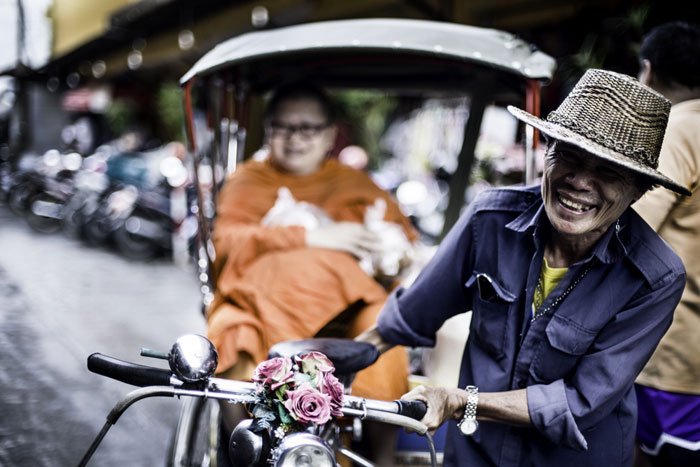
by
Kevin Landwer-Johan
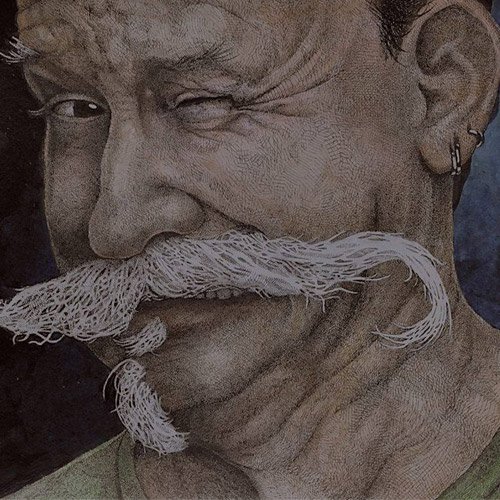
Photography in Thailand, or any other foreign culture must be done with respect for the locals. Knowing what is appropriate and what is not is the focus of this article.
Photography in Thailand is so much fun because the country is rich with visual stimulation. Many people love the culture but are unsure of things like:
- Can you photograph monks in Thailand?
- Is it okay to photograph Buddha statues in temples?
- Are there restrictions on photographing in shopping malls in Bangkok?
These are all things you might want to know when you come to do photography in Thailand. Many people travel to Thailand with their cameras and want to know they are following proper etiquette. One of the main things to know is that Thai people are generally very polite. I’ve found if you are also polite you will most often get better photographs.
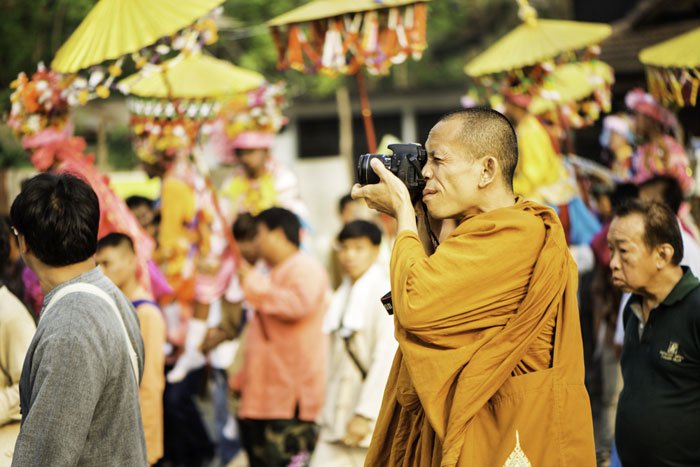
In this article, I will give you the essential photography tips on how to be a photographer with good etiquette in Thailand.
I’ve been lived in Chiang Mai from 2002 until I moved to our new home 70km south of the city. We run a boutique Bed and Breakfast Suan Sook Homestay. I’ve been a professional photographer since 1987 and teach photography workshops and retreats.
When traveling to a foreign country photographers often have questions about photography manners. Being aware of the culture you are in and how to behave can help you create better photos.
Photography In Thailand – Tip #1:
Buy A Book On Thai Culture
Before you travel you might like to invest in a book. Don’t buy a postcard type book, you will see all that when you are here. Buy a book that teaches you some of the unseen nuances of the people and their culture. You will find this far more beneficial. “Thailand – Culture Smart!: The Essential Guide to Customs & Culture” is a great companion to any foreigner who comes to Thailand.
Thai people are very polite and will not often point out to a foreigner when they are behaving or dressed inappropriately. Doing so would mean you lose face, and this is not culturally correct for them to do to you. It is important to study some and learn what you can.
Buying a book is much better than reading a few travel blogs. I so often read bad information written by well-meaning travelers on their blogs. Being generally aware of the culture will help you understand a lot about photography in Thailand.
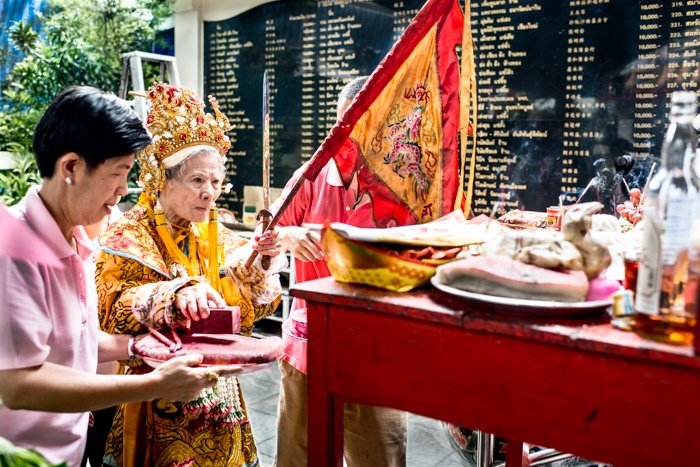
Photography In Thailand – Tip #2:
Learn a Little Thai Language
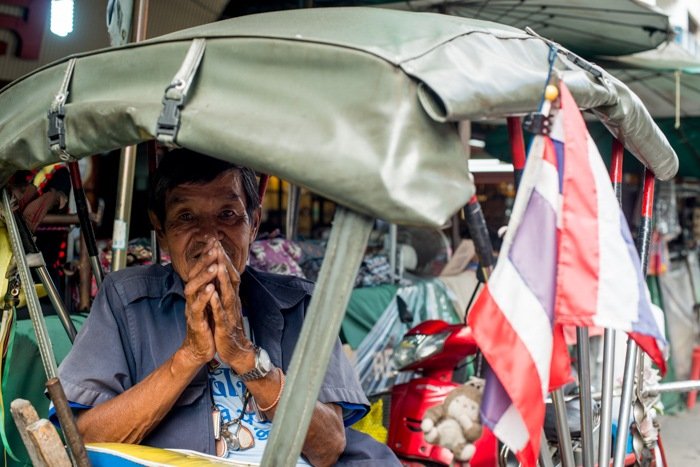
Picking up at least a few basic phrases in Thai, or the language of where ever you are traveling will help greatly. Approaching people to take their photos and speaking to them in their language will usually bring a smile. Even if you say things incorrectly most people will truly appreciate your effort. The photographs you make will be better for your linguistic endeavors.
Photography In Thailand – Tip #3:
Photograph Monks Politely
Probably the one question people who take our photography workshops ask is: “Is it okay to photograph monks”
Yes
is the short answer. Yes, and be polite and show respect is the slightly longer answer. Read later in this article for more detail regarding correct etiquette for photographing monks in Thailand.
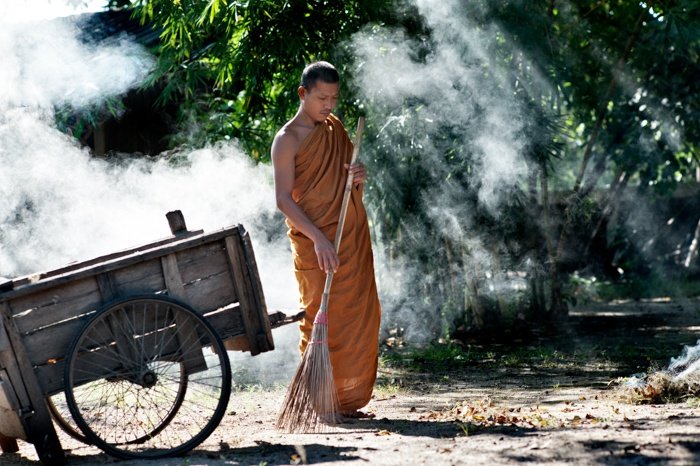
Photography In Thailand – Tip #4:
Temple Photography Etiquette
Photography in Thailand must include pictures in and around temples. Temples are everywhere and an integral part of the culture. There are deep traditions associated with Buddhist temples. It pays to be aware of these when you are taking photos.
- Dress appropriately
- Don’t turn you back to the Buddha (no selfies with the Buddha)
- Climbing on anything to get a better vantage point is forbidden
- Don’t stand inside the temple when monks are seated
- Step over the temple threshold, not on it
- Check if women are Allowed
Read more later in this article regarding correct etiquette for temple photography in Thailand.
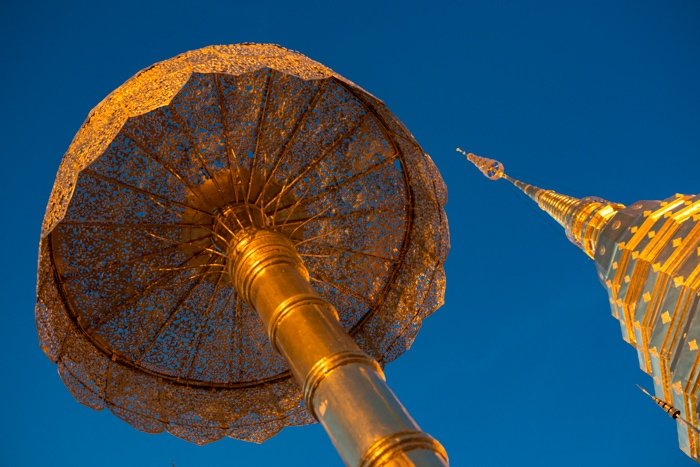
Photography In Thailand – Tip #5:
Ask Before Photographing Someone
People, especially in Thailand’s north, are often happy to be photographed. It will depend a lot on your manner and how you approach them. As I mentioned earlier, a little local language can go a long way.
Be polite, smile, make it obvious you want to take someone’s photo, and watch for their response. If they nod their head and flash you a smile, you know it’s okay. They may tell you ‘no’ or they may just put their head down and look away. Take this as a ‘no’ also.
When you get a positive response, take a few photos, then show them their picture. This will most often bring a smile to their face if there was not one present already. Enjoy the experience and don’t think of it as taking a photo but having a fun interaction. Thais love this.
Taking candid photos is not considered to be offensive. If I am doing so I make sure the person is not aware of me, or they are not interested. I never hide my camera or try to conceal it when I am photographing. People photography in Thailand is so much fun.
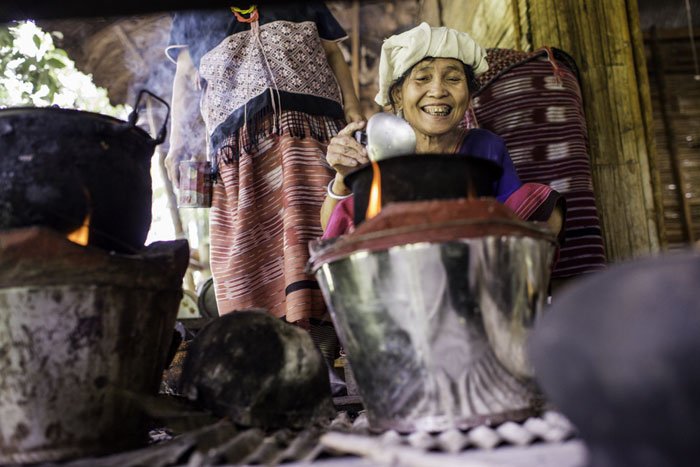
Photography In Thailand – Tip #6:
Pay When It’s Appropriate
Give a tip if it’s asked for or when you’ve had a particularly enjoyable time. If any, it will only be poor people who ask for money in exchange for letting you photograph them. Think about the camera in your hands and how little they have. 20 baht is not much to you and can be a lot to them.
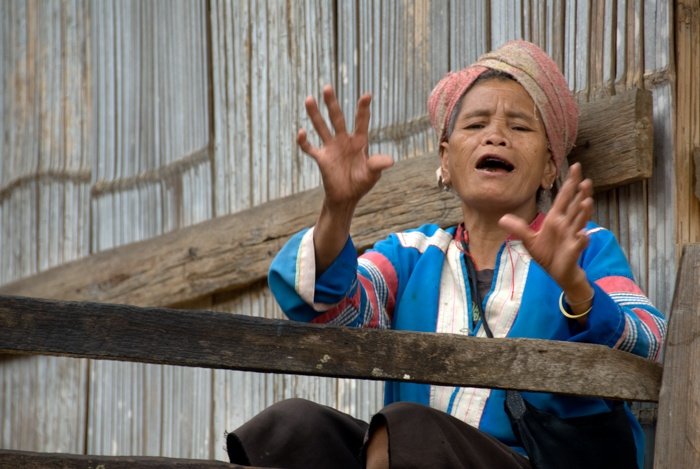
I was in a Lahu village in the far north and this woman saw my camera and immediately started shouting “haa baht, haa baht”. She was asking for 5 baht to take her photo, (despite holding up all her fingers.) I made some pictures of her and gave her 40 baht. She was so happy she introduced me to her neighbor and we spent about an hour with them taking photos as he played his bamboo instrument for us. Being even a little generous can have tremendous advantages.
In very touristy areas, (which I generally avoid,) I try not to take photos of people who are there to take your money in exchange. They can make a good living this way, but you will not often get a great picture.
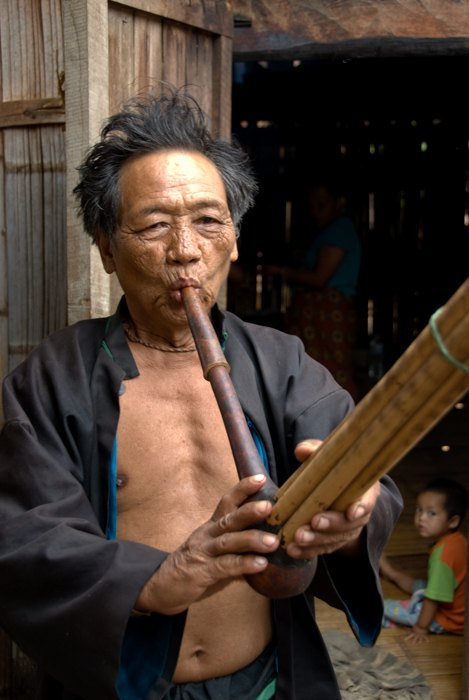
Photography In Thailand – Tip #7:
What About the Hill Tribe Tourist Villages?
I’m glad you asked. I used to be uncomfortable with the notion that these were human zoos. They really are not. We have been visiting on when we teach some of our photography workshops for many years now. We have built some precious relationships with the people. Often we have heard their stories and know the most of them are happy to be living there.
Some stay for the day and head to their homes off-site again in the evenings. Others are migrants and live on-site, returning to their home countries from time to time.
You may read some negative articles about this. Most I have read are by ill-informed tourists while others have been poorly researched. One of the most sensitive pieces I have seen is this video by filmmaker Marko Randelovic : Kayan: Beyond the Rings.
I have also written a more in-depth article on this topic.
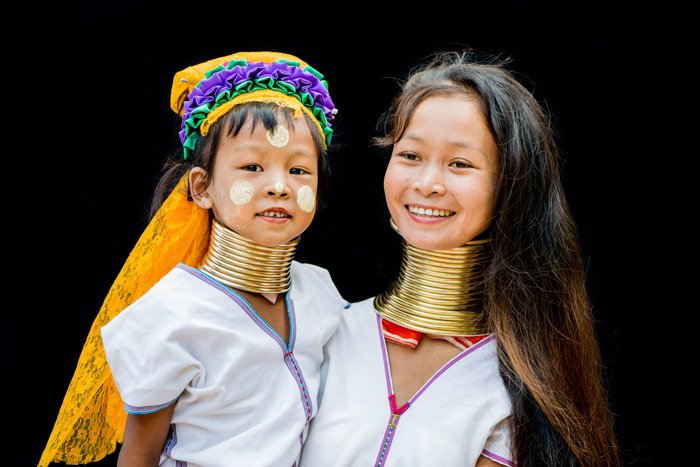
Photography In Thailand – Tip #8:
Photographing on Private Property
In most countries, you need permission to photograph when you are on private property. This is true, strictly speaking, for photography in Thailand. Shopping malls are private property and often display ‘No Photo’ signs. However, it is very common to see people taking selfies and group photos in front of displays and decorations which appear to have been installed for that purpose.
Rocking up to the mall with your big camera, a bag of tricks and tripod you might well be tapped on the shoulder and reminded there’s no photography allowed. It’s all in your approach. If you really want a photo and play it low key you will probably not be moved along.
The Skytrain platforms are another place where this happens. I have been told there it is okay to take photos, but not use a tripod.
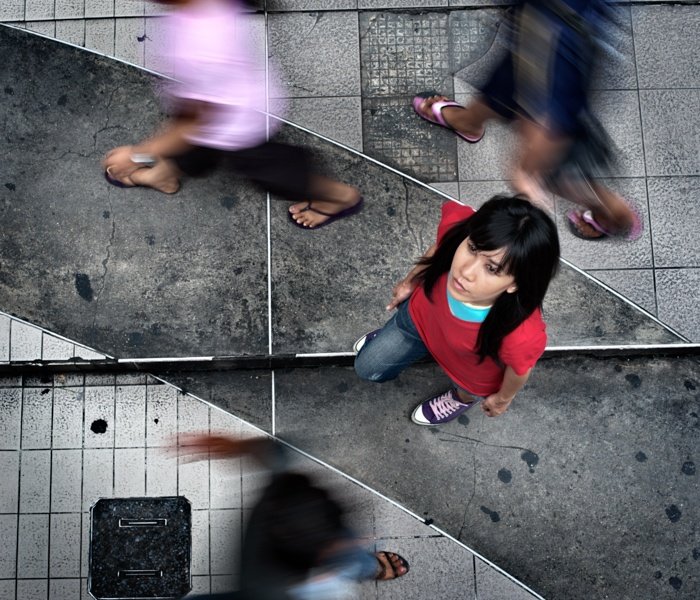
Photography In Thailand – Tip #9:
Take a Workshop
Hire a guide or take a photography workshop. In Chiang Mai and from our home in Chom Thong, (just south of Chiang Mai,) we run photography workshops and retreats. Within our photography teaching, we offer cultural information and are happy to answer questions.
For more details of our workshops please click here.
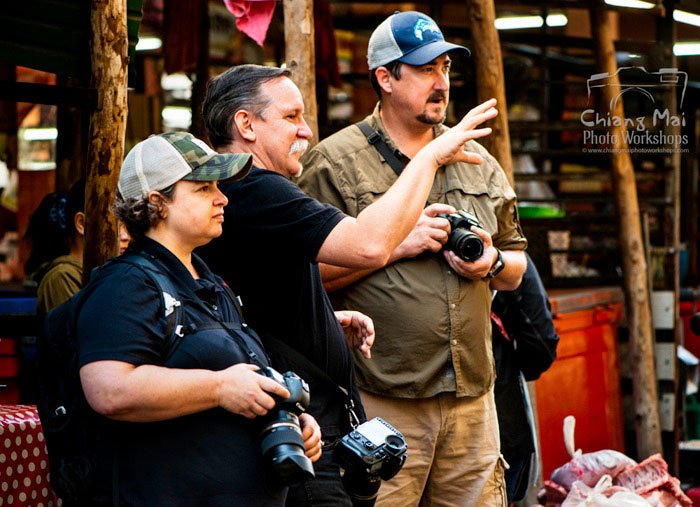
Photography In Thailand – Tip #10:
Ask Before You Photograph Kids
Thai kids often love having their photograph taken. Their parents are quite happy about it too. They love showing their kids off. It always pays to ask first, before you start taking their photos. It’s only polite and appropriate.
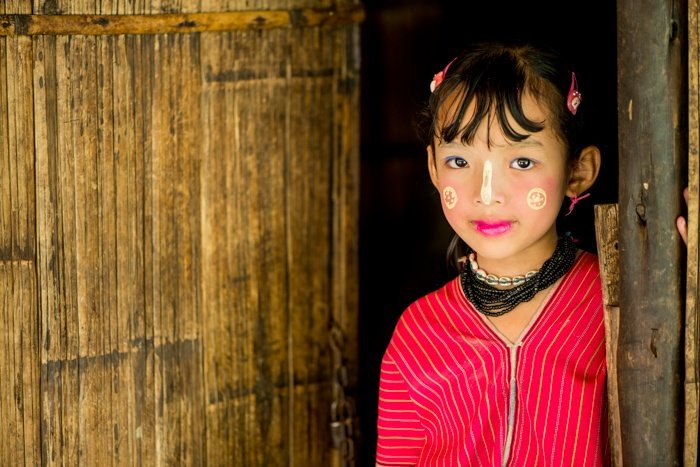
Photography In Thailand – Tip #11:
It Can Be Different in the Mountains
Finding yourself on a trek or up in any of the mountainous villages, it pays to be more careful who you take photos of. Now it has become less common, but many older tribes peoples are afraid of having their photographs taken. I have not encountered this for several years now, but it is certainly worth being aware of. If you are guests in a small remote village overnight the last thing you want to do is annoy the head man’s old mother in law!
These are the best tips I can offer you on maintaining good photography etiquette when you are visiting Thailand. Please keep reading for more detail on photographing monks and at temples.
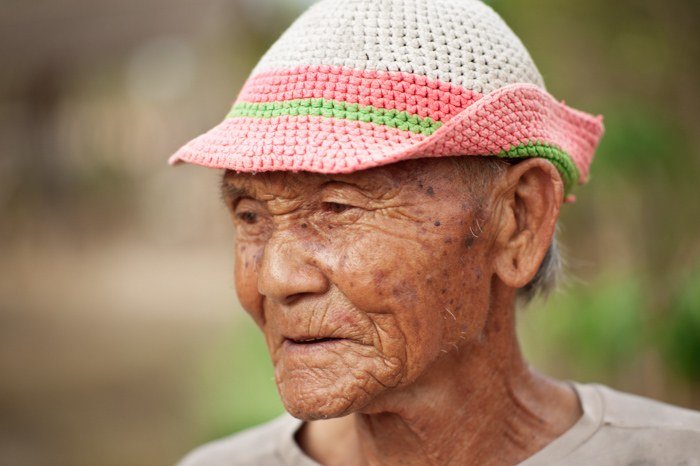
More About Photographing Monks
Every time we visit a temple in the more touristy areas I see people inappropriately dressed. Wearing short skirts or shorts is impolite when visiting a temple. Having nothing covering your shoulders is also considered inappropriate. If you are dressed like this you are offensive to the monks and culture even if you are not taking a photo.
Proper clothing is part of the respect that must be shown. This may seem very strange to many westerners. In Thailand, they hold to these traditions firmly.
Too many times I have seen rude, disrespectful tourists getting right in the face of a monk just so they can get their photo. I do not know of any culture where this would be polite, at least where there is no relationship between the photographer and the subject.

Think About The Monk
Watch them carefully. If you feel they are not appreciating having you take their photo, then don’t. There are probably more Buddhist monks in Thailand than anywhere else in the world. It should be easy to find another one who is open to having you take their photo.
One of my favorite times to take photos of monks in Thailand is first thing in the morning. Each morning monks leave their temple compounds carrying their baat, round bowls for receiving alms. They will walk in the neighborhood as people come out with food and other offerings to place in their baat.
During this time the monks will walk along or in small groups. As they encounter a faithful local wanting to make an offering they will stop. The devotees will take off their footwear and place their offerings in the monks’ bowls. Women will be especially careful not to touch the monk, as this is inappropriate.
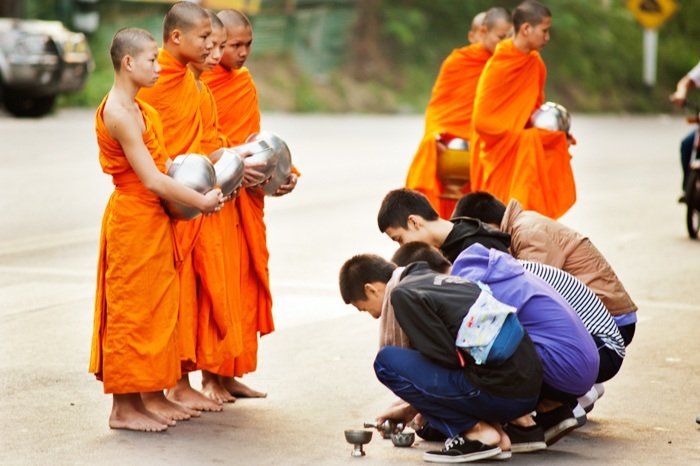
Once the offerings have been made the people will kneel or squat down. The monk(s) will then chant a prayer over them. Some people will also have a small bowl and bottle or jug of water. The water will be tipped into the bowl at the end of prayers. This is in special remembrance of an ancestor.
Monk Chat
Temples in Chiang Mai often will have what is called Monk Chat. This is so they can practice speaking English. It’s a good opportunity to sit and learn more about their lifestyle and a great bridge builder. After sitting and having an interesting cultural conversation it’s very easy to then ask the monk if you can take his portrait. He will most likely oblige.
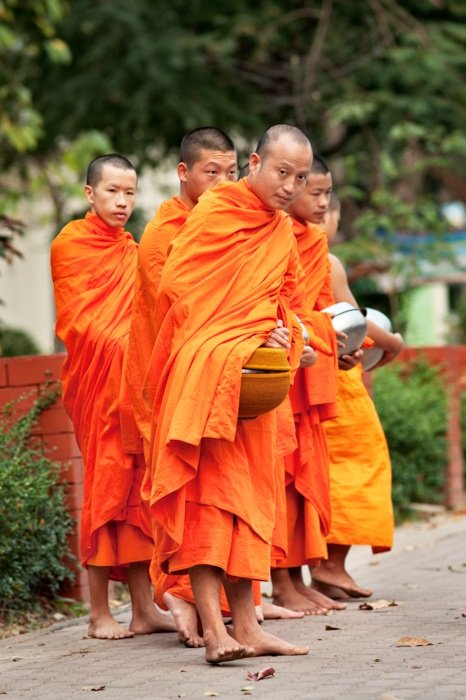
More About Good Temple Behavior
The temple has traditionally been the center of Thai society. Where this is not so strong now, customs remain very strong and it’s good to be aware of ones that will affect you when you visit.
Dress appropriately
This means having your knees and shoulders covered and nothing too sexy, skimpy or tight. These days you sometimes see Thai tourists at temples who are not so politely dressed. You can also hear the locals talking in disapproving tones about them.
Don’t turn you back to the Buddha
(no selfies with the Buddha)
You should not stand with your back to the Buddha. This is considered disrespectful of the Lord Buddha. This means no selfies with Buddha statues whether they are in a temple or outside. It is okay to photograph the Buddha statues.
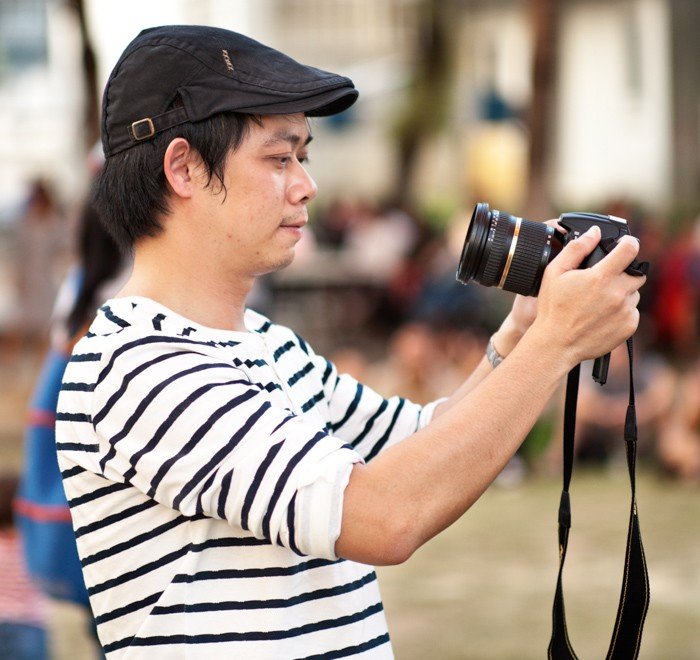
Climbing on anything to get a better vantage point is forbidden
Climbing on anything to bring yourself a high viewpoint is inappropriate. You should keep your head low, especially when you are walking past a monk or someone older than yourself. As you are passing try to walk behind or, when you cannot, bow as you are walking past as a sign of respect.
Don’t stand inside the temple when monks are seated
Whenever monks are sitting in prayer, keep your head lower than there’s. Don’t walk around looking for a better place to take a photo or be loud or disruptive in any way. Keep your voice low if you have to talk at all.
Step over the temple threshold, not on it
Stepping into the temple be careful not to stand on the threshold.
Check if Women are Allowed
Women are not permitted to enter some chedis and smaller buildings at some temples. It is believed there are sacred artifacts buried under these structures. Buddhists believe a woman’s reproductive system can be disrupted if she walks over them.

I hope this list of tips is helpful to you and allows you to be more comfortable when you come to do photography in Thailand. This is such a photogenic nation and culture. The people are warm and open. Photographing in rural areas at times as I have approached people to make their portraits they are excited at the prospect. They joke that when I take their picture back to my home country it allows them to travel overseas with me.
Futher Reading
If you’re heading to Chiang Mai take a look at my blog post Tuktuks, Temple, Monks and Markets..

this article is very useful, thank you for making a good article
beautiful place, thank you for creating this article